Blog
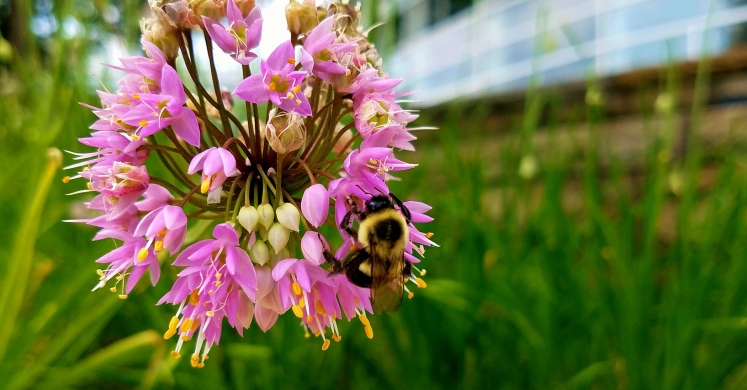
#bioPGH Blog: National Pollinator Week 2018
 A resource of Biophilia: Pittsburgh, #bioPGH is a weekly blog and social media series that aims to encourage both children and adults to reconnect with nature and enjoy what each of our distinctive seasons has to offer.
A resource of Biophilia: Pittsburgh, #bioPGH is a weekly blog and social media series that aims to encourage both children and adults to reconnect with nature and enjoy what each of our distinctive seasons has to offer.
If you’re looking for an exciting way to kick off summer, look no further: June 18-24 is National Pollinator Week! A legacy of the US Senate’s attention on pollinators, Pollinator Week was established as a part of a larger effort to bring awareness to the role of pollinators (animals that “pollinate”—move pollen from one plant to another) in our food supply and ecosystems. Pollinators have an important job to do, and we at Phipps wanted to recognize that. Explore some of the details of pollination, and hear what staff had to say about their favorite pollinator stories, conservation practices, and more!
What is Pollination?
Pollination is the process of moving a plant’s male reproductive cells (microgametophytes, which are housed within pollen grains) in order to fertilize the female reproductive cells (megagametophytes) on another flower. However, plants can also self-pollinate, which means their own pollen might reach the female structures on the same flower or on a different flower of the same plant. After pollination, the plant can produce a seed, which we can roughly think of as a “baby” plant.
What are Some Examples of Pollinators?
Most of us are familiar with at least some pollinators. Butterflies, bees, flies, beetles, and other insects carry out this important function, but there are many animals we often don’t think of in this role. Some flowers are pollinated by bats, birds, and even lizards. Many of these pollinators are looking for nectar (with some exceptions, of course), and end up transferring pollen among flowers as a result.
Why Are Pollinators So Important?
Without pollinators, most of our food supply would disappear. Globally, 75% of our foods come from crops that require pollination, and in the US, approximately one third of our food is derived directly from the work of bees. In addition, our other native non-crop plants also depend on pollinators to reproduce, so pollinators are essential to maintain much of our shared natural heritage.
What’s the Phipps Buzz About Pollinators?
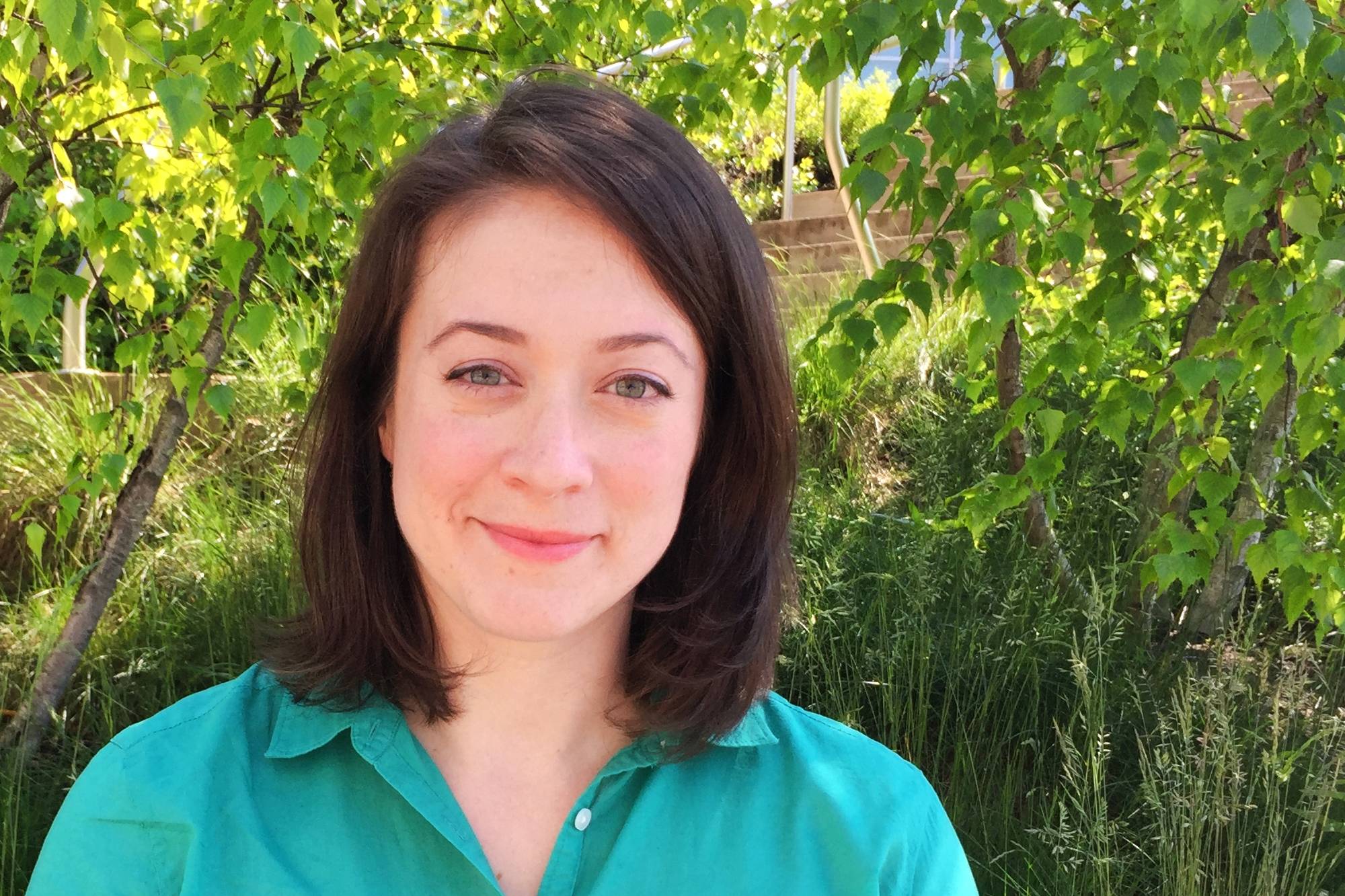
“Here at Phipps, we work hard to support pollinator habitats, and share our love for the many local pollinator species with our visitors. To help pollinators in your own backyard, try to cut out, or cut back on, pesticide and herbicides, choose native plants, and provide pollinator nesting places (decaying wood, tree snags, sandy soil, etc.). Children can appreciate pollinators, too – encourage their inner scientist by having them slow down and closely observe the beauty and diversity of pollinating insects. Even our youngest citizens can help support pollinator populations!”
-Dr. Sarah States, Director of Research and Science Education
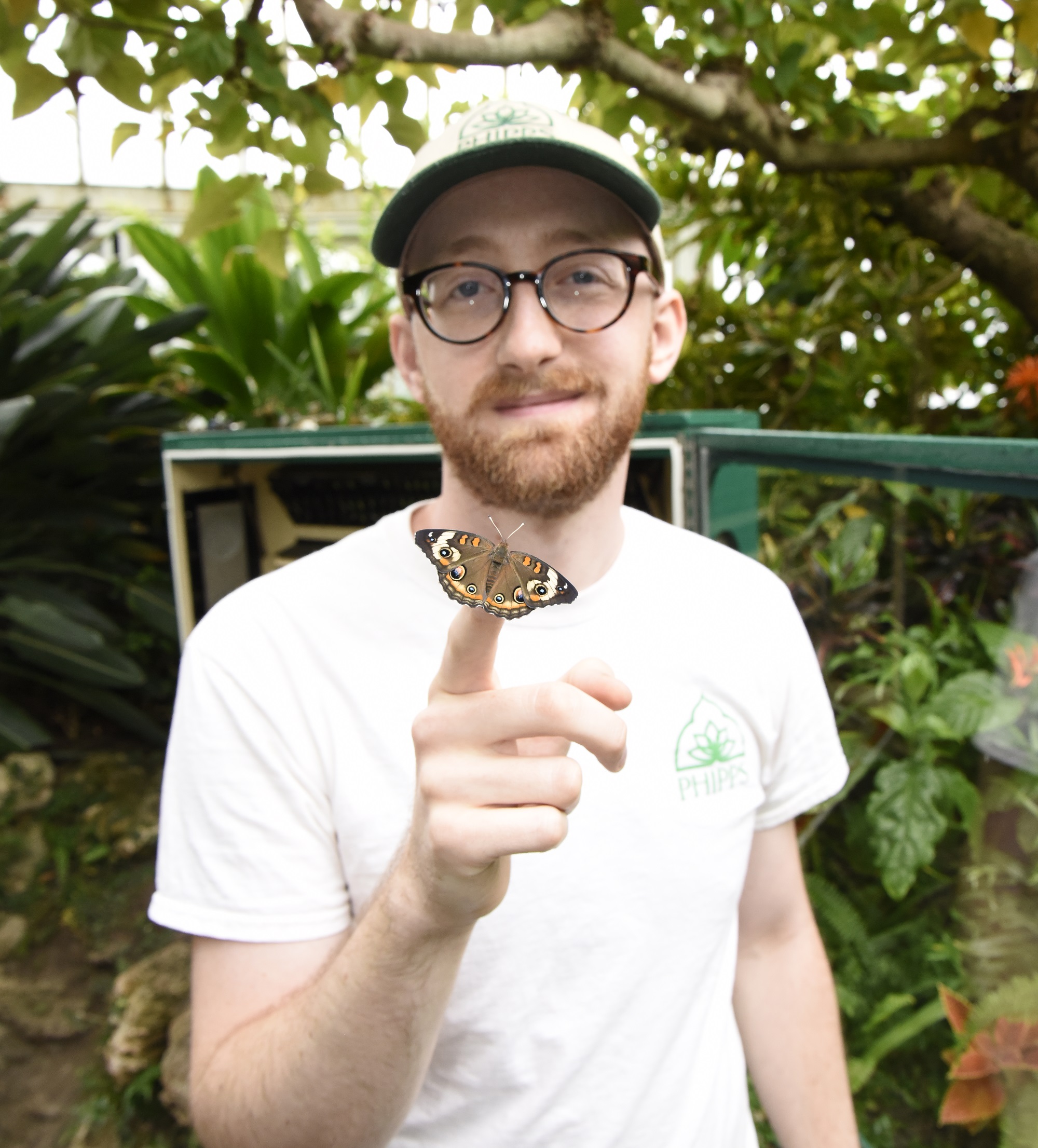
“Pollinators are so much more than honey bees! Help conserve and encourage your local native pollinating bees, wasps, butterflies, moths, beetles, and flies by planting native plants in your yard and mowing your lawn less often.”
-Dr. Ryan Gott, Phipps’ Associate Director of Integrated Pest Management
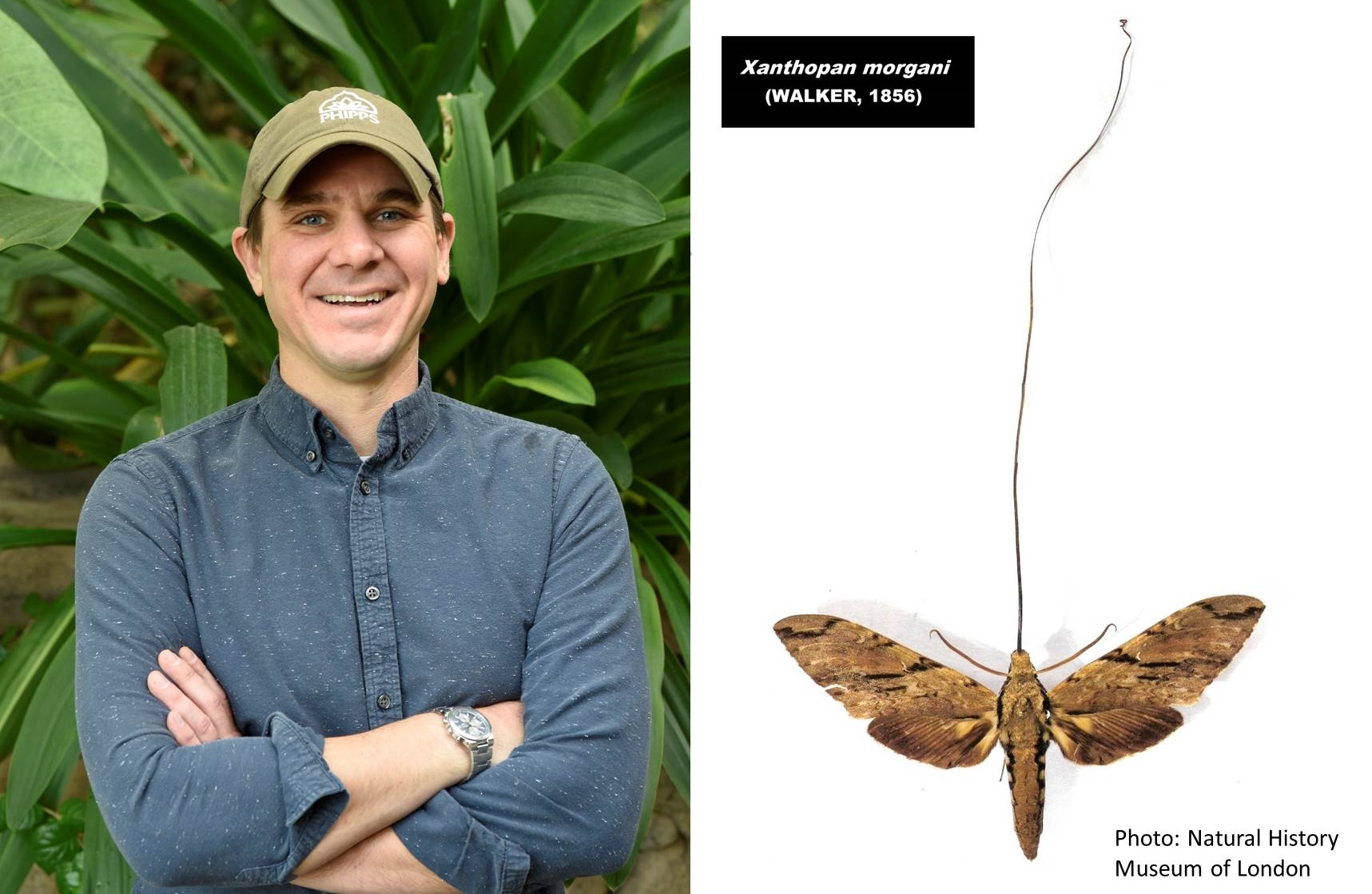
“My favorite pollinator story revolves around the ‘Darwin moth.’ When Charles Darwin received a specimen of the orchid Angraecum sesquipedale in 1862, he was astounded by the long nectary — the plant part that holds nectar — which was nearly one foot long. He theorized that there must be an insect with an equally long proboscis, or tongue-like structure, so it could get to the nectar and in the process, become covered in pollen that it would then take to the next orchid. This prediction led to a fair amount of ridicule at Darwin’s expense and was even seen by some as evidence against evolution.
In a letter, an intrigued Darwin wrote of the orchid, “Good Heavens, what insect can suck it?” It wasn’t until 41 years later that the question was answered when a new moth species, X. morganii praedicta, with an extraordinarily long proboscis, was discovered in Madagascar. In fact, the exact specimen that was used to describe the species is just down the road at the Carnegie Museum of Natural History. Unfortunately for Darwin, vindication came 21 years after his death, but now both the moth and orchid bear his name. “
-Adam Haas, Interpretive Specialist
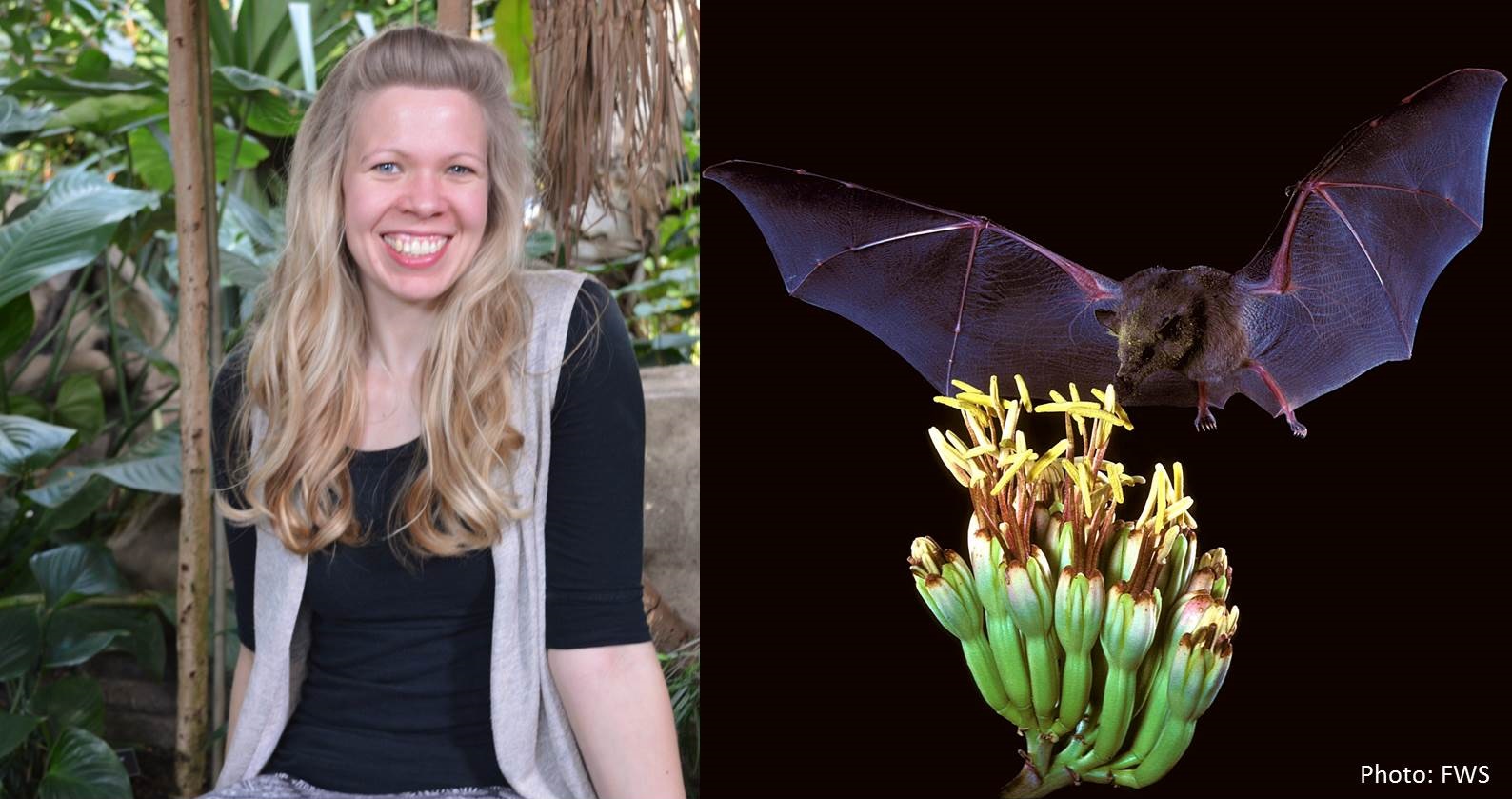
“Pollinators can come in furred and feathered varieties, as well as insects. If you like mangoes and bananas, for example, you’ll love the pollinator work of bats! In North America, the lesser long-nosed bat and the Mexican long-tongued bat are examples of species that serve as pollinators, and around the world, at least 500 plant species rely on bats for pollination.”
- Dr. Maria Wheeler-Dubas, Research and Science Education Outreach Manager
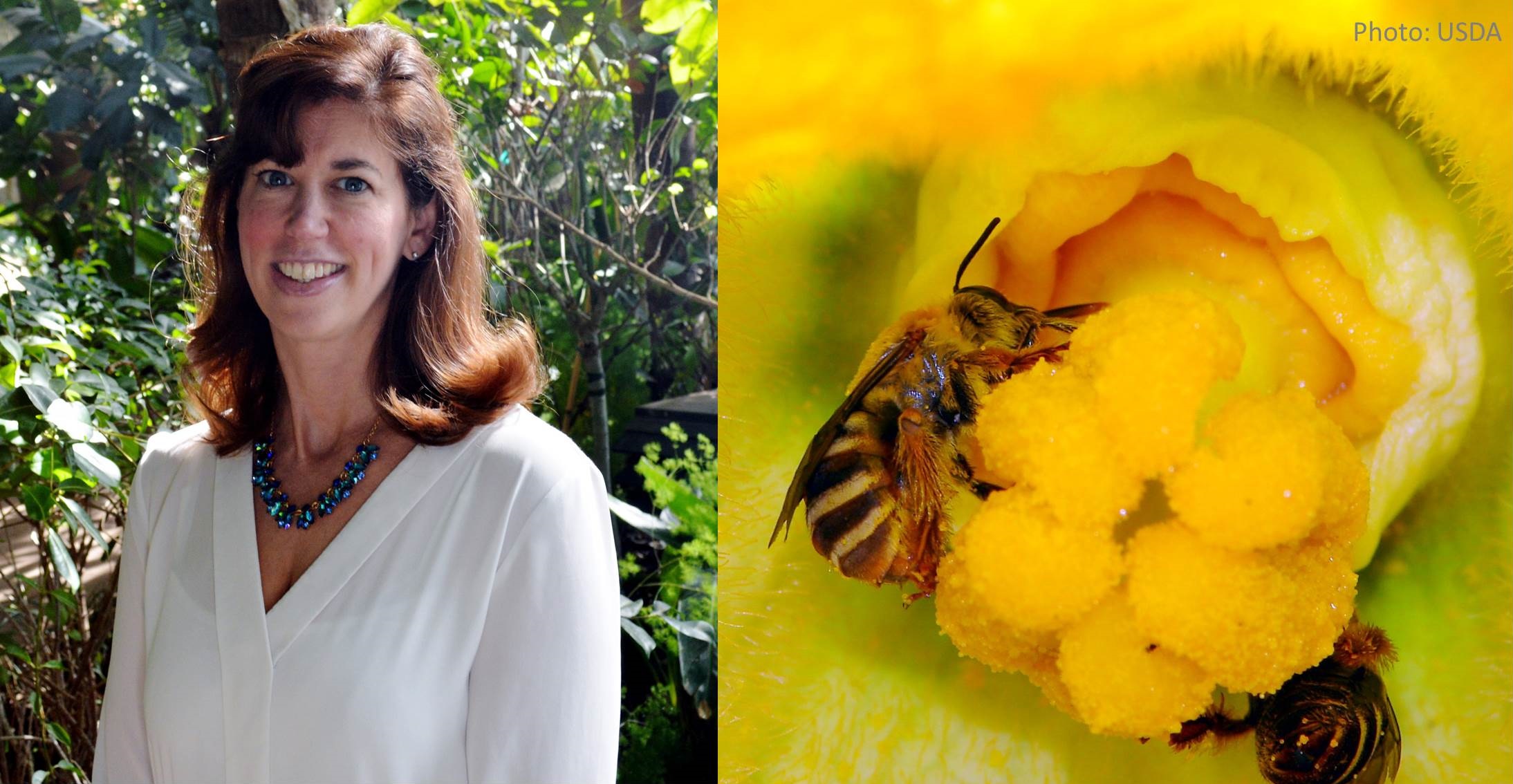 “My favorite pollinators are squash bees. They aren’t what you think of when we picture bees: they live alone in the dirt! What is amazing about them is that their bodies are specialized for carrying the pollen of different squash, like pumpkins, gourds, or even zucchini. They definitely help farmers, and by extension, us.”
“My favorite pollinators are squash bees. They aren’t what you think of when we picture bees: they live alone in the dirt! What is amazing about them is that their bodies are specialized for carrying the pollen of different squash, like pumpkins, gourds, or even zucchini. They definitely help farmers, and by extension, us.”
-Heather Shannon, School and Camp Program Manager
Connecting to the Outdoors Tip: If you're getting to work on your garden, don't forget that you can select combinations of flowers that will attract pollinators all the way into the fall!
Continue the Conversation: Share your nature discoveries with our community by posting to Twitter and Instagram with hashtag #bioPGH, and R.S.V.P. to attend our next Biophilia: Pittsburgh meeting.
Resources
USDA: Gardening for Pollinators
Photo Credits: US Fish and Wildlife Service, US Department of Agriculture, Natural History Museum of London, Pexels CC0, Maria Wheeler-Dubas, Paul g Wiegman.

